Caliber Ski Guides are expert instructors and leaders who provide personalized skiing experiences, ensuring safety, skill improvement, and unforgettable adventures on various terrains and conditions.
1.1 Definition and Purpose
Caliber Ski Guides are expert instructors and leaders who specialize in providing tailored skiing experiences. Their primary purpose is to ensure skiers have safe, enjoyable, and skill-enhancing adventures. Whether guiding beginners or seasoned enthusiasts, they offer personalized instruction, terrain navigation, and safety expertise. These guides are trained to cater to diverse skill levels and preferences, ensuring every skier gains confidence and improves their technique. Their role is pivotal in creating memorable experiences while maintaining the highest standards of safety and professionalism on the slopes.
1.2 Importance in Skiing
Caliber Ski Guides play a crucial role in enhancing skiing experiences by providing expert guidance, ensuring safety, and helping skiers improve their technique. They offer personalized instruction tailored to skill levels, fostering confidence and progression. Their deep knowledge of terrain and conditions allows skiers to explore diverse landscapes safely. Additionally, guides contribute to skill development, enabling skiers to navigate challenging slopes and appreciate the sport fully. Their expertise is invaluable for both beginners and advanced skiers, making them indispensable for a rewarding and safe skiing adventure.
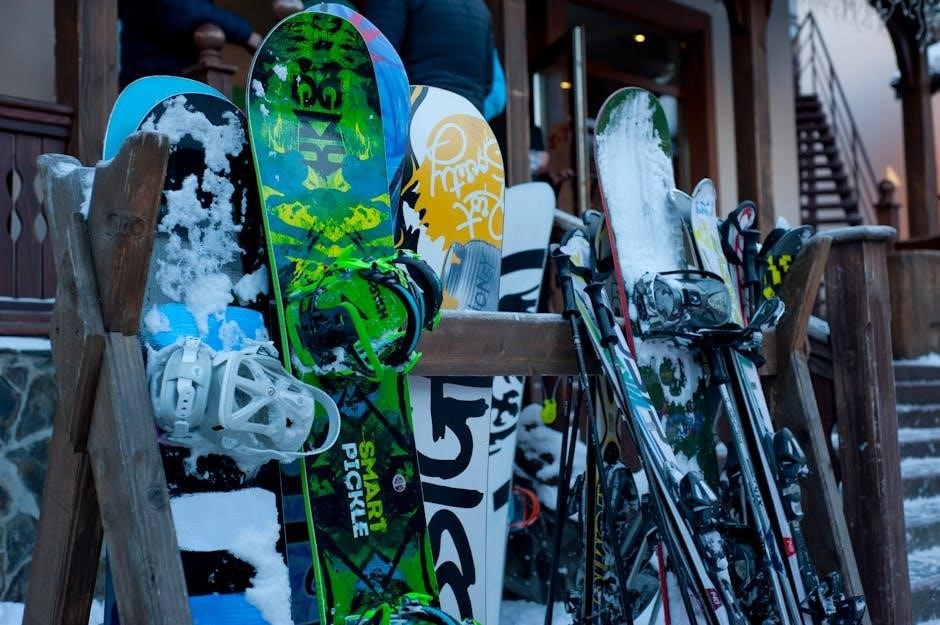
History of Ski Guides
Ski guiding traces its roots to early mountaineering, evolving into a professional service focused on safety, expertise, and enhancing skiing experiences through skilled leadership and local knowledge.
2.1 Early Beginnings
The origins of ski guiding trace back to 19th-century Norway, where local mountaineers began leading travelers through snowy terrains. These early guides combined skiing skills with deep knowledge of winter landscapes. Over time, skiing evolved from a practical mode of transportation to a recreational activity, and the role of guides expanded to include teaching and safety. By the early 20th century, formal training programs emerged, establishing the foundation for modern ski guiding. These pioneers laid the groundwork for the professional, safety-focused industry we know today.
2.2 Evolution Over Time
Over the decades, ski guiding has evolved from informal local leadership to a highly professionalized service. The development of avalanche safety protocols and advancements in equipment transformed the role, emphasizing safety and expertise. Certification programs emerged globally, standardizing training and raising the bar for guides. Today, ski guides are not only skilled skiers but also experts in navigation, first aid, and environmental awareness. This evolution reflects the growing demand for safe, personalized, and enriching skiing experiences, catering to diverse skill levels and adventure seekers worldwide.
2.3 Notable Milestones
The establishment of the first formal ski schools in the 1930s marked a pivotal moment in ski guiding history. The 1960s saw the introduction of certification programs, standardizing guide training globally. The 1990s brought advancements in avalanche safety and the rise of backcountry guiding. Modern milestones include the integration of technology, such as GPS navigation, and a growing emphasis on sustainability. These developments have elevated the professionalism and safety of ski guiding, ensuring it remains a vital and evolving part of the skiing experience worldwide.

Types of Ski Guides
Caliber Ski Guides encompass certified instructors, freestyle experts, and backcountry specialists, offering tailored experiences for skill development, adventure, and safety in diverse mountain environments worldwide.
3.1 Certified vs. Non-Certified
Certified ski guides undergo rigorous training and hold recognized certifications, ensuring expertise in safety, terrain navigation, and teaching methods. Non-certified guides may lack formal qualifications, potentially risking safety and professionalism. Certified guides adhere to industry standards, while non-certified individuals may offer lower costs but with higher risks. Choosing a certified guide ensures reliability, especially in challenging backcountry or freestyle environments, where decision-making and emergency response are critical. Always verify certifications to guarantee a safe and high-quality skiing experience.
3.2 Group vs. Private Guides
Group ski guides offer a social, cost-effective experience, ideal for skiers seeking camaraderie and shared learning. Private guides provide personalized attention, tailored to individual skill levels and goals. Group settings foster motivation through shared challenges, while private guides allow for customized pacing and focused instruction. Private guides are especially beneficial for beginners or advanced skiers aiming to refine specific techniques. Both options cater to different preferences, ensuring a tailored skiing experience for all participants;
3.4 Specialized Guides (Freestyle, Backcountry)
Specialized ski guides cater to specific skiing disciplines, such as freestyle and backcountry. Freestyle guides focus on tricks, jumps, and park skiing, offering expert tips for mastering aerial maneuvers. Backcountry guides specialize in navigating remote, unmarked terrains, emphasizing wilderness survival and off-piste techniques. These guides possess deep knowledge of terrain, weather, and safety protocols, ensuring thrilling yet safe experiences. Whether refining freestyle skills or exploring untouched backcountry, specialized guides provide tailored instruction and unforgettable adventures for skiers seeking unique challenges.
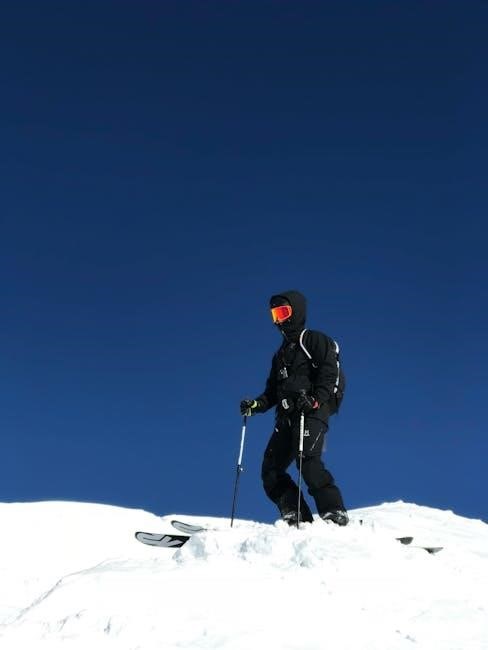
Skills and Qualifications Required
Ski guides must possess strong physical stamina, advanced skiing skills, and in-depth knowledge of terrain, weather, and safety protocols. They also require first aid certification and excellent decision-making abilities to ensure safe and enjoyable experiences for clients.
4.1 Physical Conditioning
Physical conditioning is paramount for ski guides, as they often navigate challenging terrains and extreme weather conditions. Guides need strong cardiovascular endurance, muscular strength, and flexibility to hike long distances with heavy equipment and ski for extended periods. Their physical stamina ensures they can respond quickly in emergencies and maintain the energy levels required to lead groups safely. Mental stamina is equally important, allowing guides to remain focused and composed under pressure, ensuring both their safety and that of their clients throughout the adventure.
4.2 Technical Knowledge
Caliber ski guides possess extensive technical knowledge, including expertise in equipment maintenance, avalanche safety, and terrain navigation. They understand how to assess snow conditions, predict avalanches, and use tools like probes and transceivers. Knowledge of first aid and emergency response is critical, as guides must handle injuries and crises efficiently. Additionally, they are skilled in map reading, GPS navigation, and weather forecasting, enabling them to make informed decisions and ensure safe, enjoyable experiences for clients in diverse skiing environments.
4.3 First Aid and Emergency Training
Caliber ski guides undergo rigorous first aid and emergency training to handle injuries and crises on the slopes. They are certified in wilderness first aid, trauma care, and avalanche rescue techniques. Guides are skilled in assessing injuries, immobilizing fractures, and managing altitude sickness. They also know how to respond to cardiac emergencies, administer CPR, and use emergency shelters. This training ensures they can provide immediate, effective care and coordinate evacuations when necessary, prioritizing client safety in all situations.
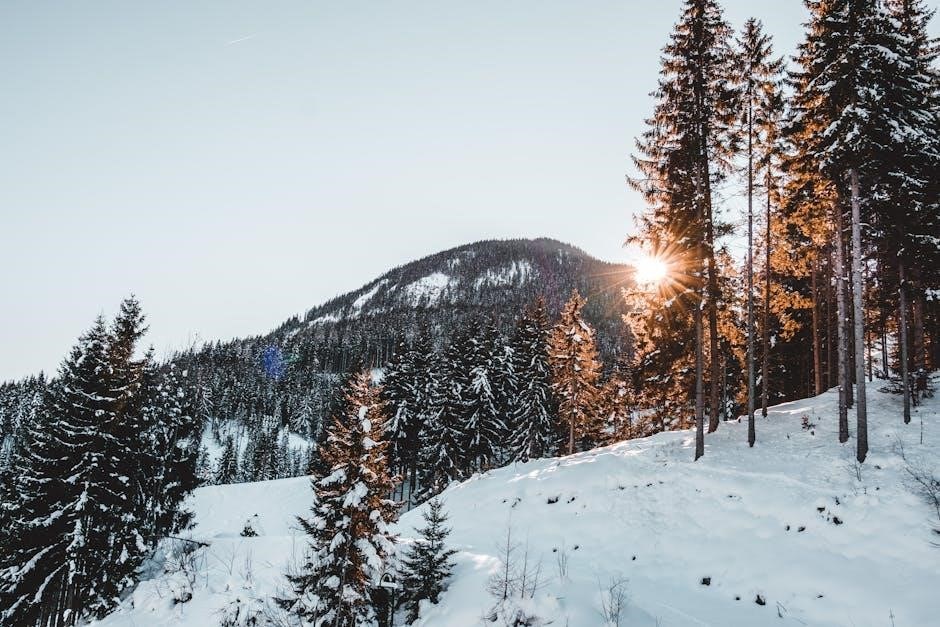
Essential Equipment for Ski Guides
Essential equipment for ski guides includes durable skis, reliable bindings, protective gear like helmets and pads, navigation tools such as GPS devices, and communication devices like two-way radios.
5.1 Ski and Binding Selection
Caliber ski guides rely on high-quality skis and bindings tailored to terrain and conditions. All-mountain skis offer versatility for mixed terrain, while touring skis are lightweight for backcountry adventures. Bindings must be durable, with reliable release mechanisms to ensure safety. Adjustable DIN settings and shock absorption features are crucial for performance. Guides often prefer bindings compatible with both Alpine and AT setups for versatility. Regular maintenance, such as binding checks and edge tuning, ensures optimal functionality and safety on the slopes.
5.2 Protective Gear
Protective gear is essential for caliber ski guides to ensure safety during high-risk maneuvers and unpredictable terrain; Helmets are mandatory to prevent head injuries, while impact-resistant goggles protect eyes from snow, wind, and debris. Knee and elbow pads provide additional cushioning during falls. Many guides also use back protectors for spinal safety. A well-stocked first-aid kit is always carried, and avalanche transceivers are a must for backcountry excursions. Properly fitted gear ensures both safety and mobility, allowing guides to perform at their best while safeguarding themselves and their clients.
5.3 Navigation Tools
Caliber ski guides rely on advanced navigation tools to ensure safe and efficient traversal of the slopes. GPS devices and detailed topographic maps are essential for plotting routes, especially in unfamiliar or remote areas. Many guides also use compasses as a backup for when digital tools fail. Additionally, smartphones with GPS apps are widely used for real-time tracking and location sharing. These tools, combined with local knowledge and experience, enable guides to assess terrain conditions and choose the safest, most optimal paths for their clients.
5.4 Communication Devices
Caliber ski guides utilize advanced communication devices to ensure safety and efficiency. Two-way radios are standard for maintaining contact within the group, especially in areas with no cell service. GPS tracking devices help monitor group members’ locations, enhancing navigation and safety. Emergency beacons, such as EPIRBs, are carried for critical situations to alert rescue teams. Durable and water-resistant designs ensure reliability in harsh weather conditions. These tools are vital for real-time coordination and emergency response, ensuring seamless communication during ski expeditions.

Safety Protocols and Best Practices
Safety is paramount for caliber ski guides, who follow rigorous protocols, including pre-tour risk assessments, emergency response plans, and use of safety gear to ensure group protection.
6.1 Pre-Tour Checks
Pre-tour checks are essential for ensuring a safe skiing experience. Guides conduct thorough equipment inspections, review weather and avalanche forecasts, and assess participants’ skill levels. They also verify emergency supplies, such as first aid kits and communication devices. Additionally, guides brief the group on safety protocols and expected conditions, ensuring everyone is prepared. These checks minimize risks and maximize readiness for a successful and secure adventure on the slopes.
6.2 Avalanche Safety
Avalanche safety is a critical component of ski guiding. Caliber ski guides undergo extensive training to assess snow conditions, identify unstable terrain, and implement preventive measures. They utilize equipment like avalanche transceivers, probes, and shovels, ensuring quick responses in emergencies. Guides also educate clients on recognizing avalanche risks and the importance of staying within designated safe zones. Real-time monitoring of weather and snowpack conditions helps mitigate dangers, ensuring a safer skiing experience for all participants.
6.3 Emergency Response Plans
Caliber ski guides are equipped with well-rehearsed emergency response plans to handle incidents like injuries, avalanches, or severe weather. These plans include stabilizing injuries, using communication devices to alert rescue teams, and coordinating evacuations. Guides carry essential first aid kits and emergency shelters, ensuring immediate care and protection. Regular drills and updates to these plans ensure preparedness for any situation, prioritizing client safety and efficient crisis management in remote mountain environments.
Popular Ski Destinations
Chamonix, Zermatt, and Whistler are favored by caliber ski guides for their challenging slopes and breathtaking landscapes, offering unforgettable skiing experiences for all skill levels.
7.1 Europe
Europe is renowned for its world-class ski destinations, offering diverse terrains and vibrant cultures. Chamonix, France, and Zermatt, Switzerland, are favorites among caliber ski guides, boasting challenging slopes and breathtaking Alpine vistas. Italy’s Dolomites provide unique landscapes, while Austria’s ski resorts are celebrated for their hospitality. These regions attract skiers of all levels, blending adventure with rich cultural experiences, making Europe a premier choice for guided skiing adventures.
7.2 North America
North America offers iconic ski destinations, with Whistler in Canada and Vail, Aspen, and Jackson Hole in the U.S. being top choices. These resorts boast vast, diverse terrains, from groomed slopes to backcountry adventures. The Rocky Mountains provide a dramatic backdrop, and state-of-the-art facilities ensure a seamless skiing experience. Caliber ski guides thrive in these regions, offering expertise tailored to all skill levels, ensuring unforgettable experiences amidst stunning landscapes and vibrant mountain cultures.
7.3 Asia and Beyond
Asia and beyond offer a growing hub for skiing enthusiasts, with destinations like Japan’s Niseko and Hokkaido renowned for their pristine powder snow. South Korea’s PyeongChang and China’s Chongli are emerging hotspots, especially after hosting major winter events. These regions provide unique cultural experiences, diverse terrains, and modern infrastructure. Caliber ski guides in these areas excel in navigating these environments, offering tailored adventures that blend local traditions with world-class skiing, ensuring unforgettable trips for explorers seeking both thrill and cultural immersion.
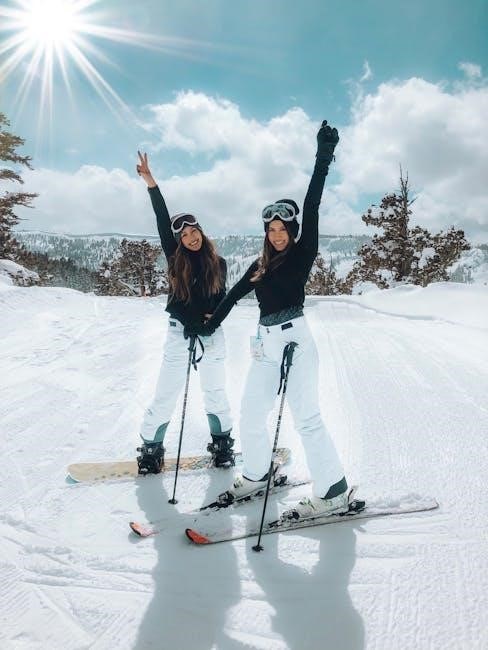
Environmental Impact and Responsibility
Caliber ski guides emphasize eco-friendly practices, minimizing waste, and promoting sustainable tourism to preserve mountain ecosystems, ensuring future generations can enjoy pristine skiing environments responsibly.
8.1 Minimizing Ecological Footprint
Caliber ski guides prioritize eco-conscious practices to reduce their environmental impact. They use eco-friendly equipment, minimize waste, and encourage low-impact skiing techniques. By adhering to “Leave No Trace” principles, guides ensure trails remain pristine, preserving natural habitats and water sources. Additionally, they promote sustainable tourism by supporting local businesses and educating clients on responsible environmental practices, fostering a deeper connection between skiers and nature while safeguarding the planet for future generations.
8.2 Leave No Trace Principles
Caliber ski guides uphold the Leave No Trace principles, emphasizing minimal environmental disruption. They ensure clients stay on designated trails, pack out all waste, and avoid damaging vegetation. Guides educate skiers on respecting wildlife habitats and maintaining natural landscapes. By promoting these practices, they help preserve pristine skiing locations for future generations, ensuring a harmonious coexistence between outdoor enthusiasts and nature.
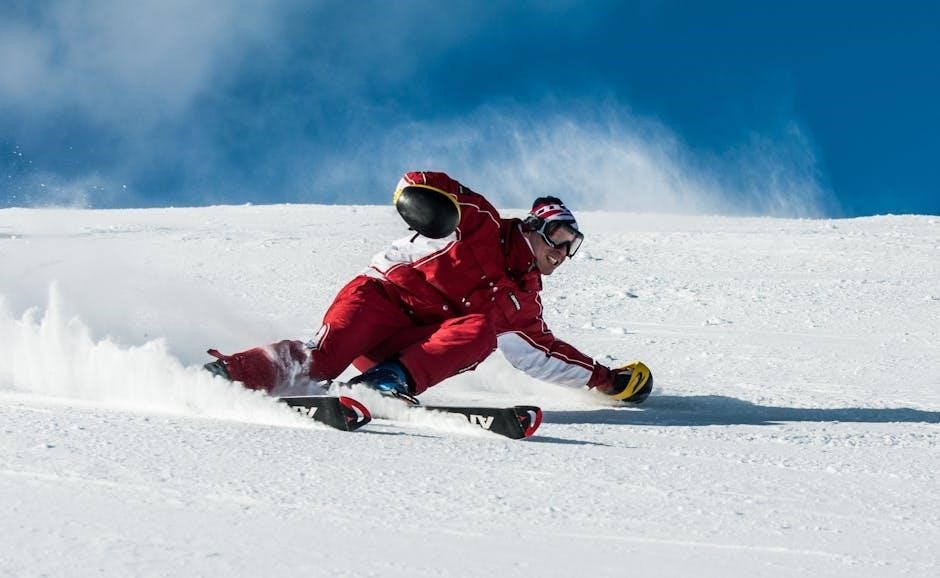
Cost Considerations
Cost considerations for hiring caliber ski guides vary based on certifications, group size, location, and season. Budgeting tips help plan effectively.
9.1 Factors Affecting Pricing
Factors affecting pricing for caliber ski guides include certifications, group size, location, season, and guide experience. Private guides and specialized skills, like backcountry expertise, increase costs. Additional services such as equipment rentals or transportation may also contribute to the final price, making pre-planning essential for budgeting effectively.
9.2 Budgeting Tips
Budgeting for ski guides involves comparing prices, opting for group tours, and booking early. Off-peak season and package deals can reduce costs. Prioritizing needs and allocating funds to certifications and safety ensures value for money without compromising on quality, making skiing accessible while staying within budget constraints effectively.
How to Book a Ski Guide
Booking a ski guide involves selecting certified professionals, comparing services, and securing reservations early. Clear communication about preferences ensures a tailored experience, enhancing safety and enjoyment.
10.1 Choosing the Right Service
When selecting a ski guide service, prioritize certifications and experience; Consider group sizes, terrain expertise, and customer reviews. Ensure the service aligns with your skill level and adventure goals. Clear communication about expectations and safety protocols is essential. Customize your experience by discussing preferences beforehand. Verify insurance and emergency preparedness. Compare pricing and packages to find value. Research local reputation and ask for referrals to ensure reliability. A well-chosen service enhances both safety and enjoyment, making your skiing experience memorable.
10.2 Key Questions to Ask
Ask about the guide’s certifications, experience, and familiarity with the terrain. Inquire about group sizes and the guide-to-client ratio to ensure personalized attention. Discuss safety protocols, emergency procedures, and equipment provided. Clarify the itinerary, including meeting points and start times. Request information on weather conditions and contingency plans. Understand the cancellation and refund policies. Ask for references or reviews from past clients to gauge reliability. Finally, confirm the cost and what is included in the package to avoid surprises. This ensures a well-prepared and enjoyable experience.
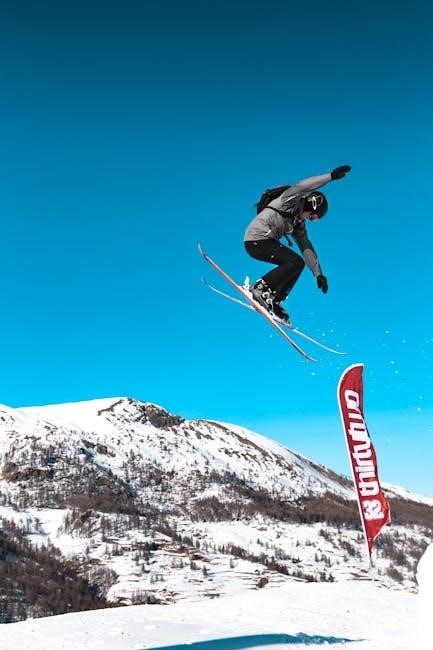
Reviews and Testimonials
Caliber Ski Guides are highly praised for their expertise, safety focus, and personalized attention. Clients often highlight their guides’ ability to adapt to skill levels and terrain, ensuring memorable experiences. Many testimonials emphasize the guides’ professionalism and passion for skiing, making them a trusted choice for adventurers worldwide.
11.1 Assessing Credibility
Evaluating the credibility of Caliber Ski Guides involves reviewing verified testimonials, certifications, and professional affiliations. Look for guides certified by reputable organizations like the IFMGA or PSIA. Check online reviews from multiple sources to ensure consistency in feedback. Additionally, inquire about their experience and success rates with diverse groups. Transparency in their safety protocols and emergency response plans further assures their reliability. A credible guide balances technical expertise with interpersonal skills, fostering trust and confidence among clients.
11.2 Using Online Platforms
Online platforms are invaluable for researching and booking Caliber Ski Guides. Websites like Google Reviews, Yelp, and social media provide insights into guide reputations. Platforms specializing in outdoor activities often feature detailed profiles, client testimonials, and service ratings. Many ski resorts and tour operators list their guides with verified credentials. Using these resources helps ensure credibility and reliability. Additionally, booking platforms may offer secure payment options and clear communication channels, enhancing the planning process for skiing adventures.
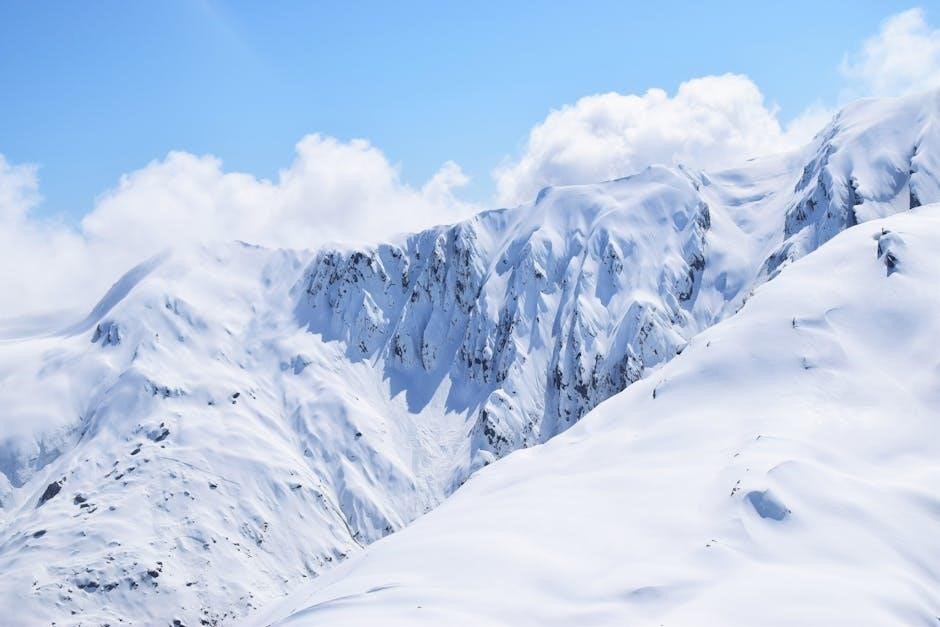
Future Trends in Ski Guiding
Future trends in ski guiding include advanced technology integration, sustainable practices, and specialized training programs, enhancing safety, efficiency, and personalized skiing experiences for all skill levels globally.
12;1 Technological Advancements
Technological advancements are revolutionizing ski guiding, with tools like GPS tracking, avalanche prediction software, and wearable devices enhancing safety and decision-making. Data analytics and machine learning improve route planning and risk assessment. Real-time communication devices strengthen guide-client interactions, while apps provide instant weather and slope condition updates. These innovations enable guides to offer more personalized, efficient, and safer experiences, staying ahead of industry demands and environmental challenges. Such technologies are reshaping the future of ski guiding, making it more accessible and enjoyable for skiers of all levels.
12.2 Sustainability Initiatives
Sustainability initiatives are becoming a priority for caliber ski guides, focusing on eco-conscious practices to minimize environmental impact. Guides are adopting renewable energy sources for operations and promoting eco-friendly gear. Many are partnering with local communities to support sustainable tourism, ensuring that skiing activities align with environmental preservation. By embracing these practices, ski guides contribute to the long-term health of mountain ecosystems while offering clients a responsible and ethical skiing experience. Such efforts highlight the industry’s commitment to balancing adventure with environmental stewardship.
Caliber ski guides play a pivotal role in enhancing skiing experiences, ensuring safety, and fostering skill development. Their expertise and dedication continue to shape the future of skiing.
13.1 Summary of Key Points
Caliber Ski Guides are experienced professionals who enhance skiing experiences through expert guidance across diverse terrains and conditions, ensuring safety and skill enhancement. Their adaptability to various skill levels and interests makes them indispensable for both novices and advanced skiers. Committed to safety and environmental responsibility, they provide personalized experiences, offering unparalleled adventures and insights. Their knowledge of equipment and latest trends, along with their mentoring roles, underscores their crucial impact on the skiing community, fostering growth and enjoyment for all enthusiasts.
13.2 Final Thoughts
Caliber Ski Guides exemplify excellence in skiing instruction and leadership, offering tailored experiences that cater to diverse skill levels. Their expertise ensures safety and skill enhancement, making skiing accessible and enjoyable for everyone. By combining deep knowledge of the sport with a passion for teaching, they create unforgettable adventures. Their adaptability and commitment to excellence make them indispensable for anyone seeking to elevate their skiing journey, ensuring memorable experiences on the slopes.